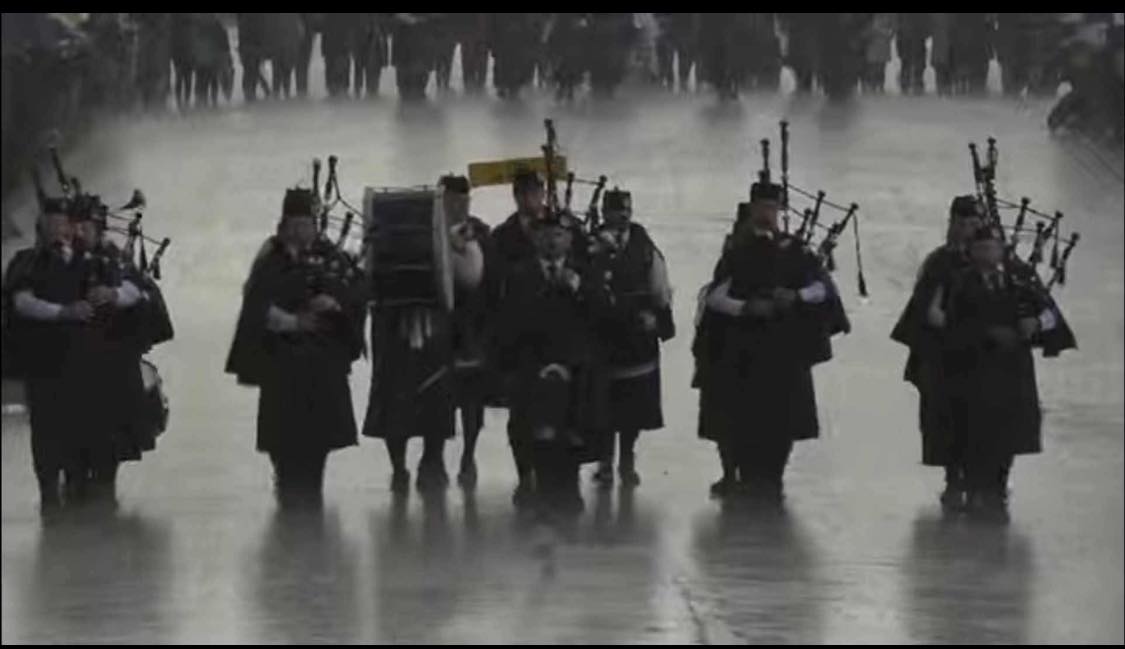From our local roving reporter on the scene. None of the comments are reflections of views shared by the RNZPBA, adjudicators, or others.

I would start with some inspiring quote about the rain, but I don’t think anyone really needs that. Anyone at the 2025 New Zealand Pipe Band Championships will remember the absolute deluge bands faced on Saturday, including the poor Grade 4B and Grade 4A bands who suffered through what are some of the worst playing conditions. Perhaps ‘what doesn’t kill you makes you stronger’ is apt – but in any respect, the 2025 ‘Nationals’ is memorable for many reasons.
Invercargill are always good hosts of the National Championships, and this year was no different. The city really comes alive during the contest, and visitors from both New Zealand and Australia fill the bars, restaurants and hotels and stimulate the local economy. The local committee pulled together an impressive array of events and opportunities for bands and visitors alike, including a whisky tasting on the Thursday night prior to the Nationals. March is the perfect time to visit the south, and no doubt many travelers engorged themselves with the bluff oysters on offer at the start of the season. But most of us were in the Deep South for one thing and one thing only – to hear superb pipe band music.
Day One – Friday
Friday morning dawned drizzly and cold – much different to the day before which was warm and sunny – and with a hint the weather had set in for much of the day, bands were sheltering from the adverse conditions. Intermittent breaks in the drizzle meant some bands were spared the worst of the conditions, however watching on you felt for a number of the bands early on. However, someone has to kick the competition off, and this years honours went to Papakura Pipe Band at 9am. Both Grade 4A and Grade 4B were mixed – it was evident in the Grade 4B event that many bands struggled with the idiom and phrasing at tempos which the bands could sustain, and in Grade 4A some struggled with tone (perhaps given the day). Impressive stand outs in the morning were Hamilton Caledonian Development and ILT City of Invercargill in Grade 4B, the City of Dunedin Pipe Band drum corps in Grade 4B, and Metro Scottish stood out from the rest in Grade 4A as an overall package. Interestingly, it was smaller bands who end up on top of the grades, with bigger bands tending to finish middle of the pack. A sign of the times perhaps that quality music, technique and expression from a smaller group of players is back in vogue over the big band sound.
Two bands from Australia were entered in the Grade 4 competitions – both from Knox Grammar School, a welcome and worthy addition to the competition. Particularly given they are school bands, it was fantastic to see the next generation of players coming through.
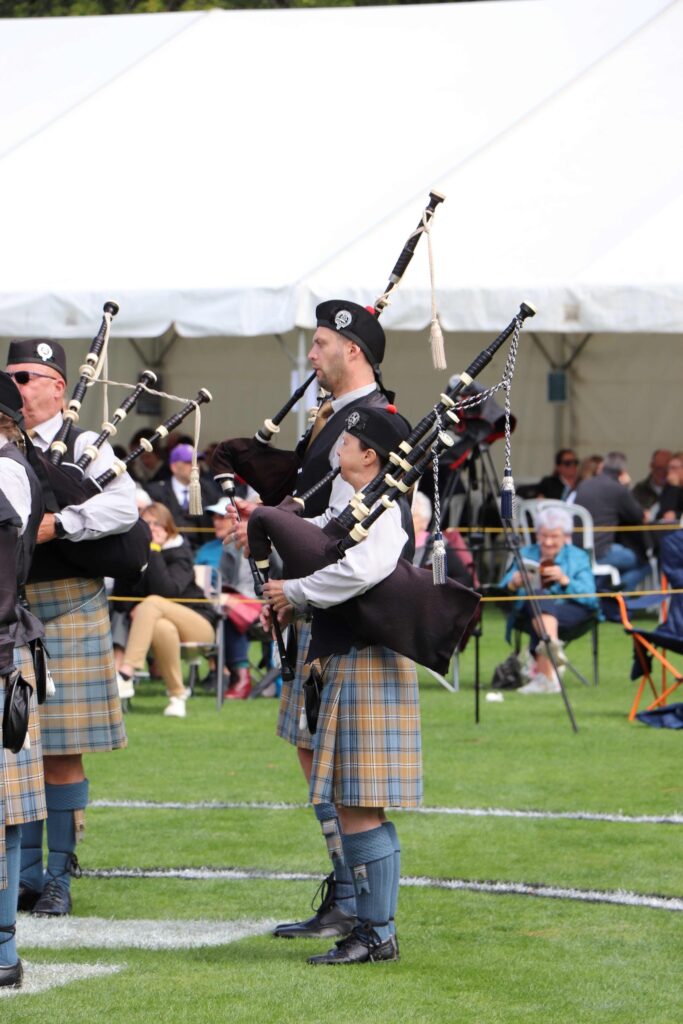

The morning was the first opportunity to hear the Grade 3 bands as well, with a new entrant this year from Scottish Society of New Zealand. Two bands firmly stuck out as contenders – Hamilton Caledonian and Canterbury Caledonian, both of who would ultimately battle it out in a close contest for first and second. Canterbury dominated the drumming, and Hamilton took straight firsts in piping in both events. Ultimately Hamilton would reign supreme, one point ahead of Canterbury, with both bands 19 points clear of third place getters Auckland & District.
Grade 4B honours went to the ILT City of Invercargill, hometown favourites presenting a convincing and commanding series of performances, followed by Hamilton Caledonian Development and then South Canterbury. Another close contest between the top two, with only a couple of points in it. In Grade 4A, Metro Scottish were in command, finishing 11 points clear of runners up Hokonui Celtic and City of Rotorua. Interestingly, Hamilton and City of Rotorua spent a whole week in the South Island, taking in the Queenstown Pipe Band Championships and spending the week in Southland preparing for the Nationals – perhaps a recipe for success?
It is worth noting the 17 bands entered in Grade 4B this year, with 10 of them from the South Island. It will be interesting to see if those bands travel to the North Island next year to compete as well.
The ever-popular Juvenile contest finished off Day One of competing. In total, 12 bands performed in this event – perhaps the largest entries on record. What is clear though is there is a clear front runner, and top half. Perhaps some consideration could be given to how we encourage those in the bottom half to see success when there is a substantial difference in performance standard. St Andrew’s College A took the title again, with what can only be described as a ‘WOW’ performance – it had it all, musical poise, technical accuracy and tonal precision. It was well ahead of the rest of the pack, and runners up ILT City of Invercargill A gave it a good nudge as well. A lone second ranking for St Andrew’s College A was the only blemish in the event for them. Six of the 12 bands in the Juvenile event were from the South Island, four from the North and two from Australia, but interestingly five of the top six bands are all mainland bands.
The day finished just a smidgen before 6pm, meaning a long day for young competitors, officials, organisers, judges and listeners alike. I had taken refuge a couple of times under the shelter of the pavilion but by in large the day had produced some really memorable performances. St Andrew’s College A in the juvenile stood out as probably the top performance, but I couldn’t help remember too the Hamilton Caledonian Development Band in the Grade 4B MSR first up.
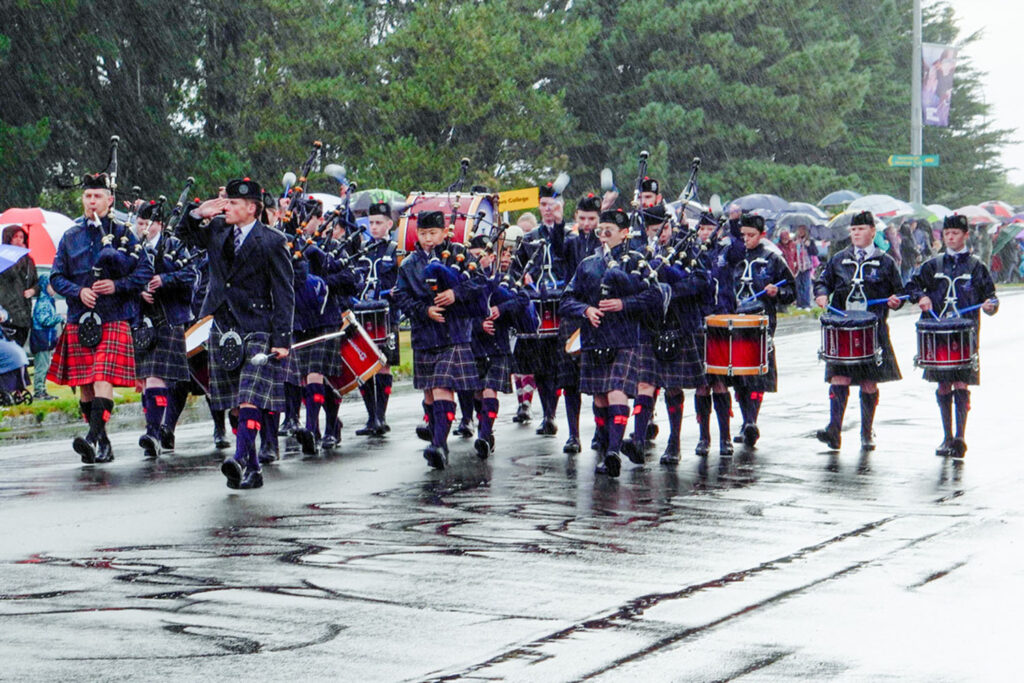
Day Two – Saturday
If Friday dawned drizzly and cold, monsoon-like conditions greeted us on Saturday morning. Brave Invercargillians lined the streets from early on. Mayor Nobby Clark and the local member of parliament Penny Simmonds joined Iain Blakeley on the dais adorned in coats, jackets and umbrellas. It’s hard to given an accurate summary of the performances given the weather, suffice to say the decision to call off the street march was absolutely the right one. It was borderline emotional watching bands young and old tramp down the street, often ditching emerging puddles and lakes of water. Perhaps it could have been called off earlier, but with the sky teasing blue skies on occasion, calling the street march off was – in my mind – the only call that could be made. I heard second hand that many of the judges crit sheets were so water logged it rendered them redundant. If you haven’t looked at the live stream replay of the event to understand how bad it really was, you should do so here.
The rest of the day was to continue as planned. For the Grade 2 and Grade 1 bands, not having to drench their instruments immediately prior to the music events was hugely welcome relief – you could see it on their faces as they made their way to the park for the afternoon. And in some respects, I’m glad. The standard of music we enjoyed for the Saturday afternoon was without question one of the highest we have heard in many years in New Zealand.
Only five bands entered the Grade 2 competition, but all five were superb in their own right. Two Australian bands made up the numbers, with Pipe Band Club from Sydney having recently returned from the World Championships where they finished in third place in Grade Two, and St Andrew’s Pipe Band from Brisbane. However, St Andrew’s College from Christchurch put on two superb performances to ultimately claim the title. Last year’s winners, Celtic Pipe Band from Nelson, had to settle this year for fourth – no doubt disappointed, but certainly not disappointing at all to listen to. City of Tauranga rounded out the grade with a big band presence, presenting some interesting ensemble packages in both events. The two Australian bands battled for second and third (with both bands splitting second and third prizes in the MSR and Medley), but ultimately Pipe Band Club from Sydney finished runners up on an ensemble preference over their friends from Queensland.
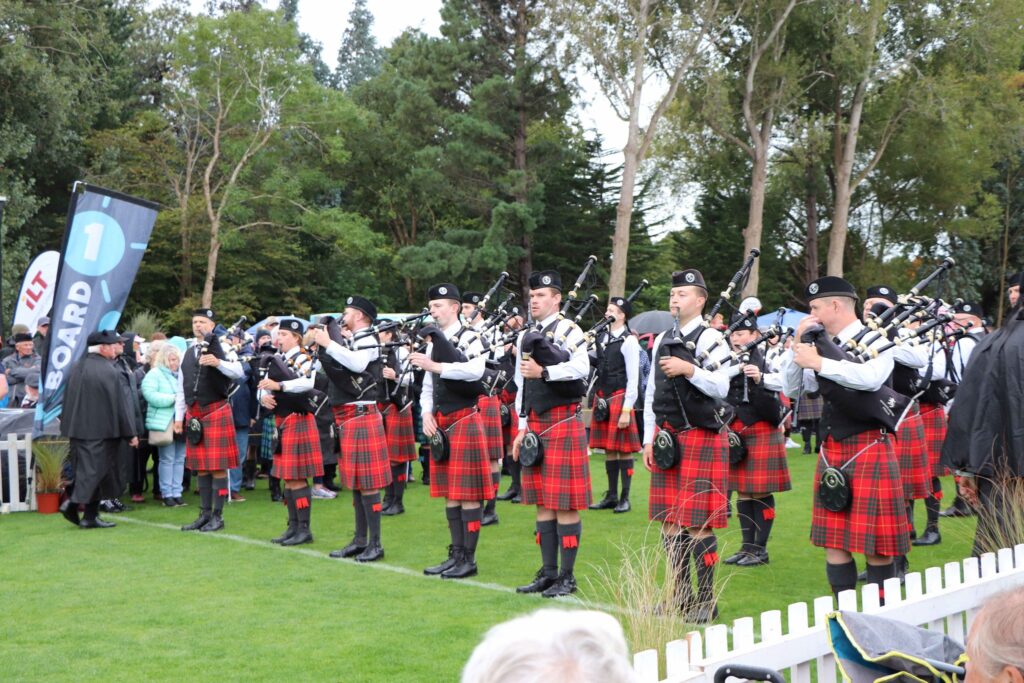
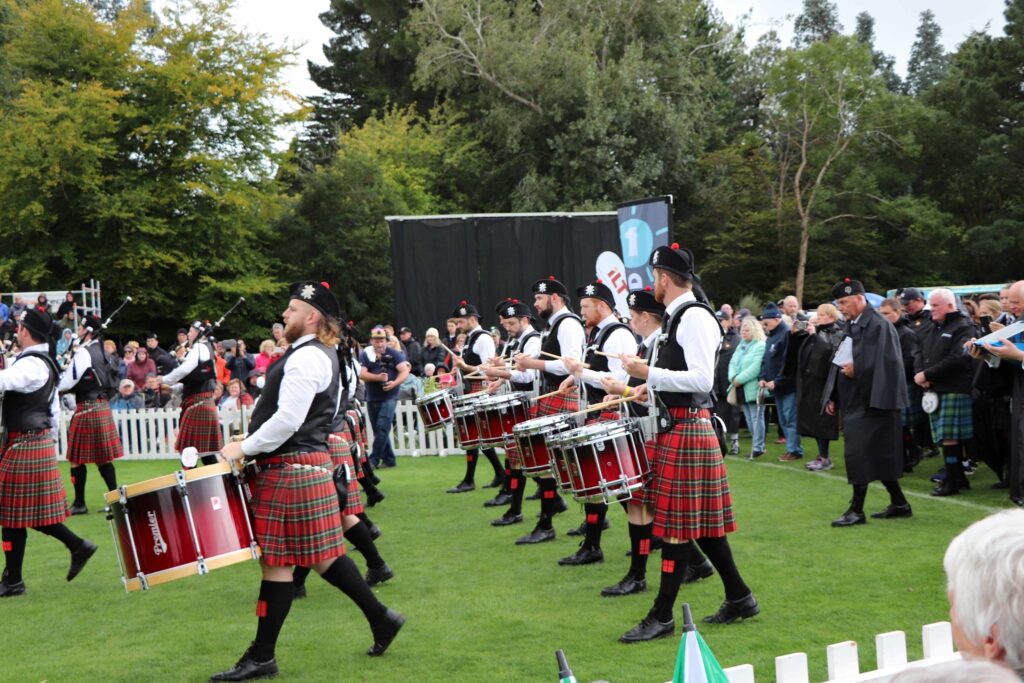
And then came the big one – the Grade 1 competition. Six bands made up the finale, again with one Australian addition in the form of Hawthorn Pipe Band, in what was a very high standard of musical, technical and tonal precision. Perennial favourites Canterbury Caledonian Society led the MSR contest off with their Argyllshire Gathering, Atholl Cummers and Macallisters Dirk set, perhaps just lacking a little of their normal tonal and musical excellence. However, they and Manawatu Scottish would ultimately battle it out for top honours. The rain had set in again by this stage, with varying issues marring some performances – including what sounded like some wet drones and chanter intonation issues. New Zealand Police made a return to the competition park this year, with a smaller and less refined package than the rest of the grade. Manawatu Scottish impressed with their Sinclair chanters make a return, and the remaining three all impressed with advanced musical expression marred with aforementioned tonal issues. Manawatu finished up on top in the MSR, with Canterbury Caledonian and ILT City of Invercargill Highland Pipe Band rounding out the top three.
The medley was a step up across the board from all six bands. Canterbury presented their very attractive new medley, leading off with the great 2/4 march Willie Maclean. New Zealand Police impressed with their finale tune, Mrs Megan Harrington. Manawatu presented a huge wall of accurate, resonant sound during their version of the piobaireachd I’ve got a kiss of the kings hand. ILT City of Invercargill dazzled with lightning tempos and some innovative piping finger work. Auckland & District showed composure and maturity right throughout their performance, and Hawthorn Pipe Band returned with their ‘Bloody Fields of Flanders’ medley with impressive, dynamic percussive accompaniment throughout. What a show from them all! A hard decision by the judges, but in the medley Canterbury led the pack followed by Manawatu Scottish and Hawthorn.
So where did this leave us at the wash up? With the drum major flourishing events being once again dominated by the rain, another wise call to cancel the massed bands and head straight to a shortened version of the prize giving proved popular. At this stage, I was firmly ensconced in the bar with many kilted and non-kilted punters who were looking for any form of shelter. Presentations to the bands were made in quick succession with humour inserted from MC Karen Wilson, and a new trophy was presented in Iain Blakeley’s name to replace the Grade 1 Champion trophy.
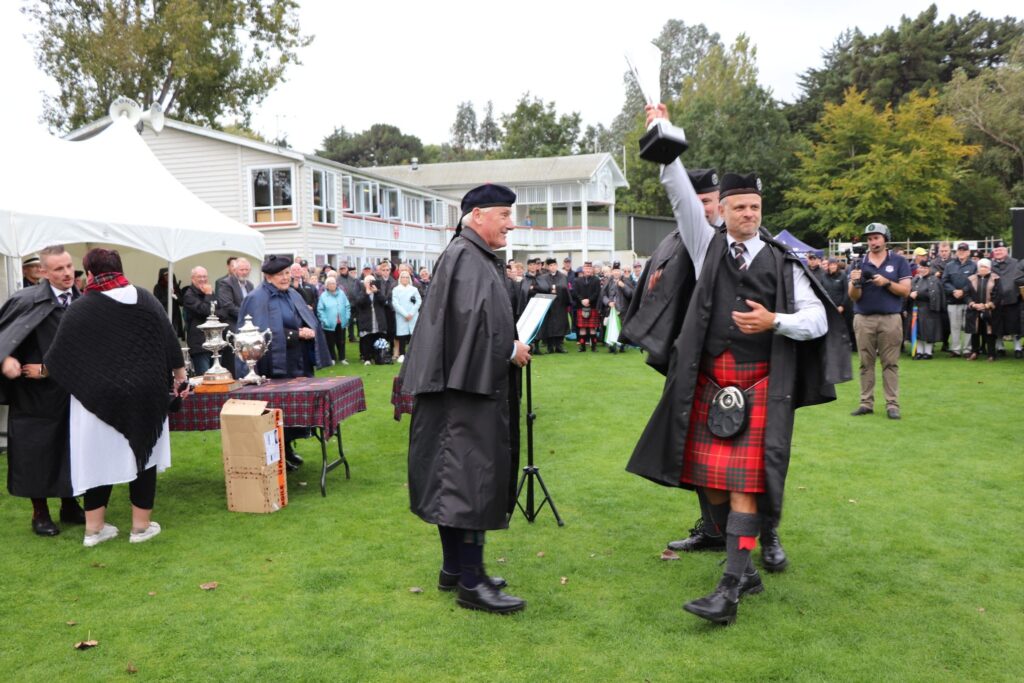
So – who was it? In the end, it was close but clear – Manawatu Scottish lifted the title for the first time in 17 years by a margin of six points ahead of Canterbury. Canterbury was ten points clear of third place getters Hawthorn Pipe Band, who no doubt will be delighted by edging closer to the top two each year they come to New Zealand. Manawatu Scottish took the drumming prize too, with quite a split of difference between them and Canterbury in each event.
What were my takeaways? We do things well here in New Zealand – agile enough to adapt to adverse weather conditions which impact the musical performance of bands, not letting standards slip where it matters, and celebrating the winners in true Kiwi style. We are also better than we think – across almost of the grades, our performances stack up well against our international counterparts. The bluffies were also pretty good, despite most of them being consumed by those at the roof top bar at the Langlands Hotel on Saturday night.
Well done Invercargill. Well done bands, organisers, officials and judges. Well done spectators for putting up with the weather over two days. I certainly got my moneys worth from the two days – rain and all.

